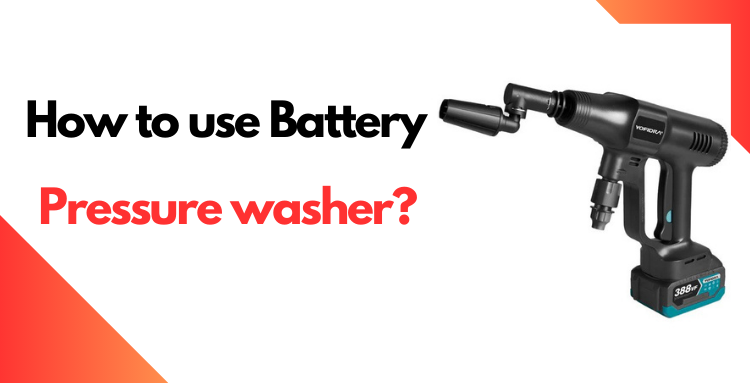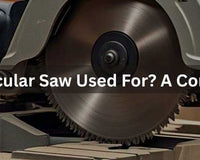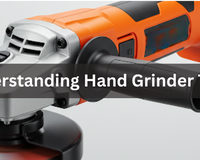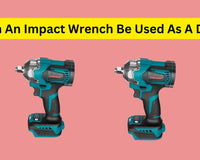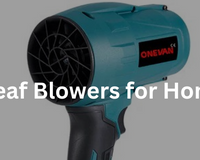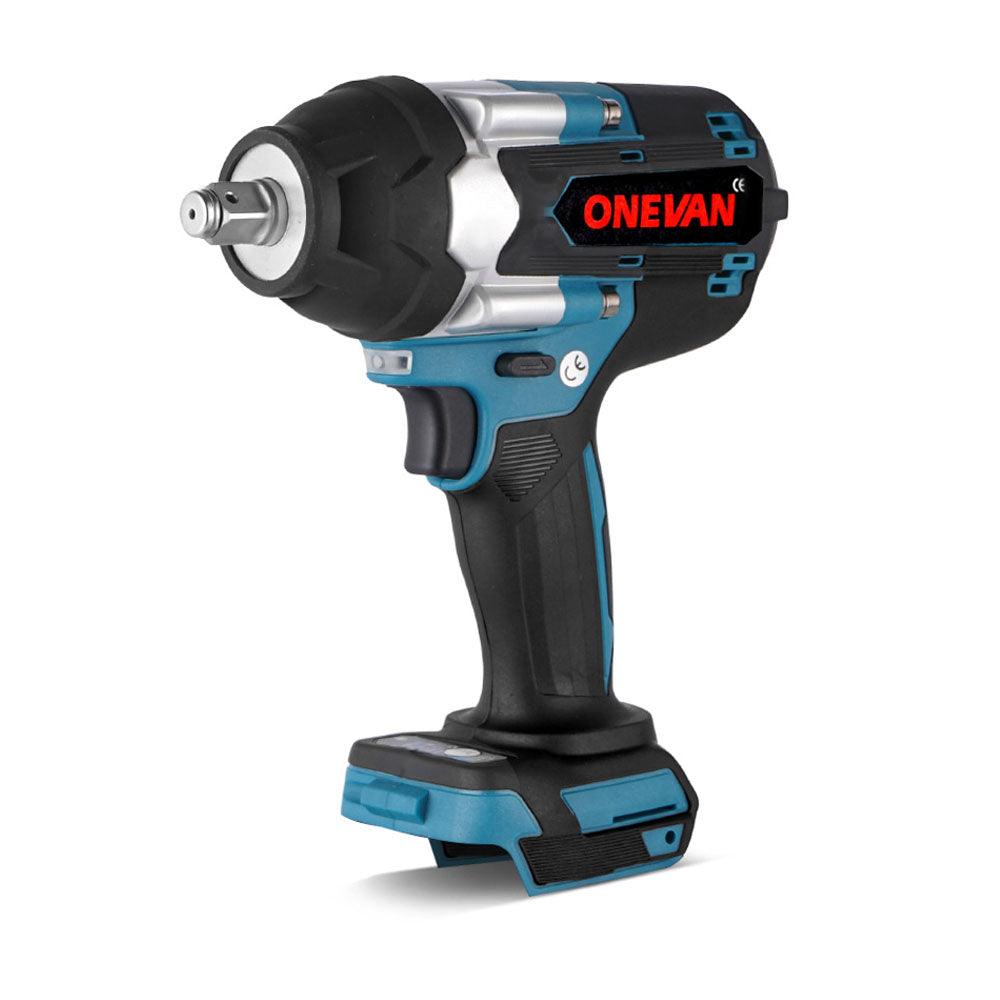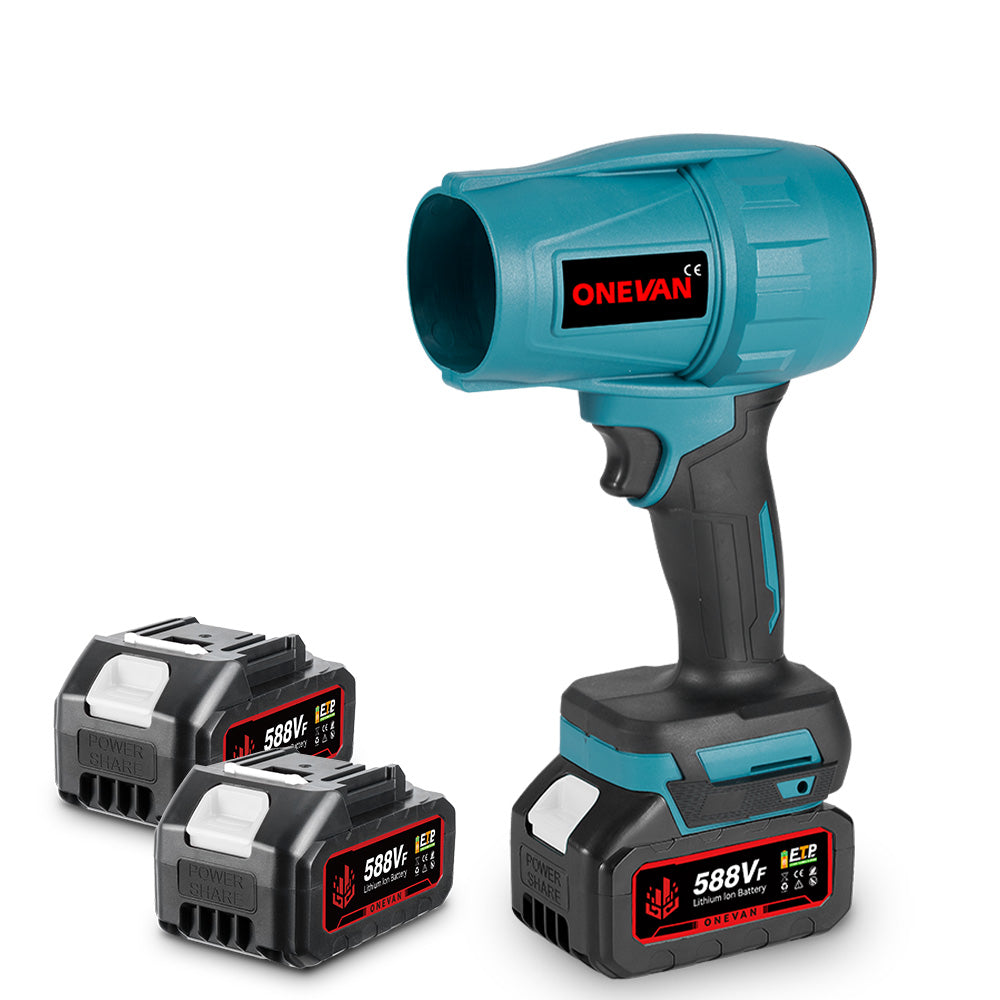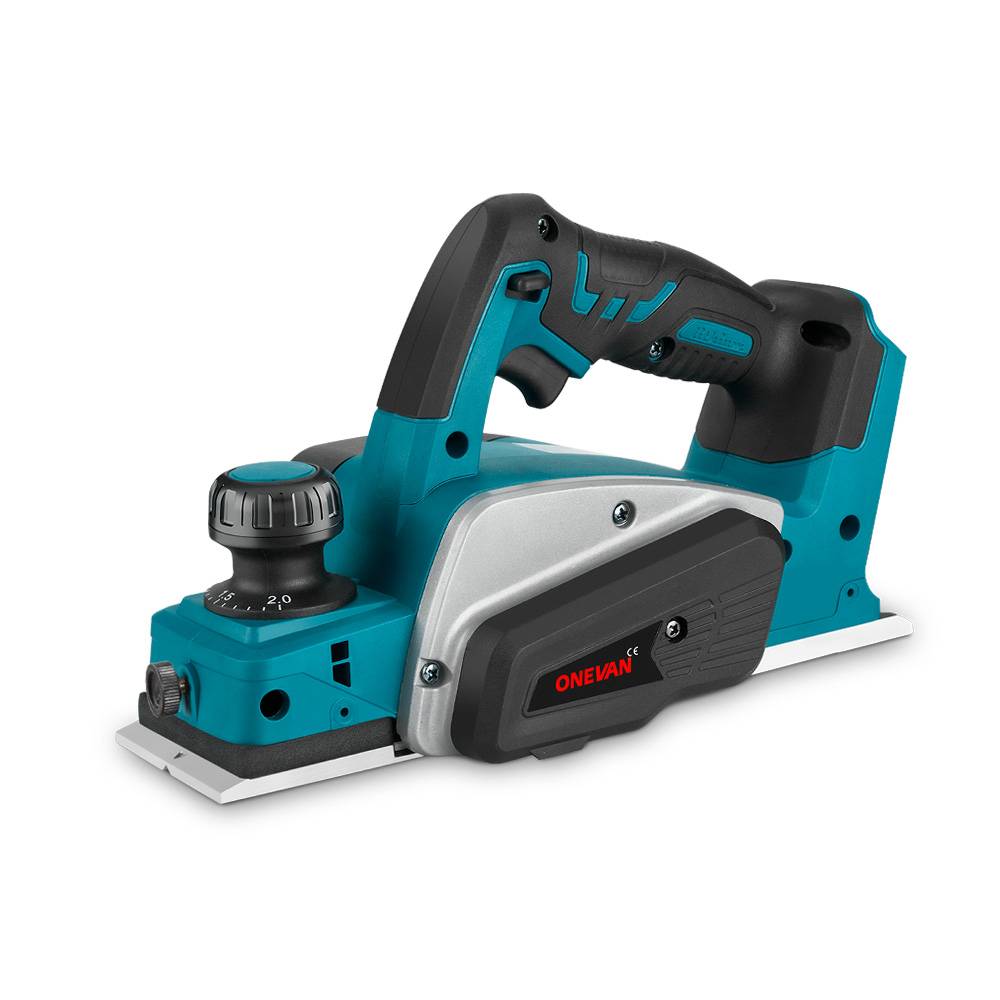¿Cansado de tener una terraza sucia y de luchar por que tu coche vuelva a brillar? Todos hemos pasado por eso. No te preocupes, porque hoy vamos a presentarte una nueva herramienta de lavado: ¡la hidrolimpiadora a batería !
Esta máquina compacta puede sorprenderle con sus sólidas capacidades de limpieza, eliminando de manera eficaz todo, desde suciedad y mugre hasta otras sustancias persistentes que podrían empañar la apariencia de su hogar. Diga adiós a las dudas sobre el lavado a presión.
Sin embargo, es posible que haya escuchado historias desalentadoras sobre las hidrolavadoras, incluidos problemas con cables enredados, instrucciones complejas y el temor de dañar objetos valiosos. Pero no tenga miedo más porque esta guía lo convertirá en un experto en el uso de hidrolavadoras.
Lo guiaremos paso a paso para que pueda limpiar con confianza cualquier proyecto en cualquier momento. Debido a su diseño conveniente y operaciones móviles, las personas usan estos dispositivos para tareas de limpieza diarias. Sin embargo, el funcionamiento seguro es crucial y el uso adecuado puede brindar resultados excepcionales sin contratar servicios de limpieza costosos.
Hidrolavadoras inalámbricas, con cable y a gasolina
|
Característica |
Lavadora a presión inalámbrica |
Lavadora a presión con cable |
Hidrolavadora a gas |
|
Portabilidad |
Inigualable, limpia cualquier lugar con fuente de agua. |
Limitado por la longitud del cable |
Altamente portátil |
|
Conveniencia |
Sin peligro de tropiezos, instalación y almacenamiento más sencillos |
Requiere cables para funcionar |
Requiere combustible y aceite, configuración ligeramente más compleja. |
|
Nivel de ruido |
Funcionamiento más silencioso |
Generalmente más fuerte |
Opción más ruidosa |
|
Potencia (PSI y GPM) |
Rango inferior de PSI y GPM (100 PSI - 1500 PSI, 0,8 GPM - 2,0 GPM) |
Mayor rango de PSI y GPM (1300 PSI - 3000+ PSI, 1.5 GPM - 4.0+ GPM) |
Rango más alto de PSI y GPM (varía, a menudo supera los 3000 PSI y 4,0 GPM) |
|
Actuación |
Requiere recarga de batería |
Entrega de potencia constante |
Potencia constante, ideal para trabajos largos. |
|
Costo |
Generalmente asequible |
Generalmente caro |
Coste inicial más elevado, pero consumo eficiente de combustible para trabajos largos |
1. ¿Cómo funciona una hidrolavadora inalámbrica?
Antes de profundizar en las hidrolimpiadoras inalámbricas , examinemos brevemente cómo funcionan estas máquinas en general. Las hidrolimpiadoras tienen una potente bomba para expulsar un chorro de agua concentrado. Puede eliminar con éxito la suciedad, la grasa, el moho y la pintura descascarada.
- El uso de una hidrolavadora se traduce en un importante ahorro de tiempo y energía, lo que la convierte en una herramienta valiosa para una variedad de proyectos de limpieza.
- Motor: El motor eléctrico utiliza energía de la batería para impulsar la bomba, ofreciendo un funcionamiento silencioso con bajo mantenimiento.
- Batería: fuente de alimentación, generalmente de iones de litio (liviana, de larga duración y buena capacidad de retención de carga). El voltaje afecta la potencia de limpieza (un voltaje más alto = más potencia).
- Bomba: toma agua de la manguera y multiplica la presión. Utiliza pistones o engranajes para hacer pasar el agua por una abertura estrecha.
- Boquilla: controla el patrón de rociado y la intensidad de la presión. Ofrece opciones como rociado en abanico o chorro de agua.
Tipos de hidrolavadoras: a gas, eléctricas o inalámbricas
Existen innumerables hidrolimpiadoras en el mercado, cada una con diferentes especificaciones y precios. Pero, como principiante, debes comprender la diferencia entre hidrolimpiadoras eléctricas, a gasolina e inalámbricas .
Otro factor a tener en cuenta es la fuerza que ejerce cada uno de estos tipos de hidrolimpiadoras. La presión se mide en algo llamado PSI (libra por pulgada cuadrada). Cuanto más aumenta este número, mayor es la presión. Por lo general, las hidrolimpiadoras eléctricas tienen una potencia nominal de entre 500 y 2000 PSI, por lo que son adecuadas para trabajos livianos. En promedio, las hidrolimpiadoras a gasolina tienen una presión mínima de aproximadamente 2500 PSI, mientras que otras miden entre 3000 y 4000, por lo que son lo suficientemente potentes para realizar tareas pesadas.Por ejemplo, si su entrada de ladrillos tiene capas blancas visibles debido a la suciedad acumulada, una hidrolavadora puede limpiar esas áreas de manera eficaz. Tiene paredes con capas blancas por todas partes y la suciedad se nota. Por lo tanto, la hidrolavadora inalámbrica es buena para hacer un excelente trabajo. No tiene que preocuparse por la manguera de agua ni por el cable eléctrico.
Cuando eliges un modelo a gasolina, "cortas el cable", por así decirlo, porque no requiere una conexión eléctrica. Debes tener combustible a mano. Ya sabes, un tanque lleno dura aproximadamente una hora, por lo que es posible que hayas necesitado cuatro tanques pequeños, lo que equivalía a tres galones de gasolina. A los precios actuales, cuesta 30 dólares más cargarlo.
Hidrolavadoras eléctricasTener una hidrolavadora eléctrica en casa es una buena idea. Es la mejor máquina de limpieza para su terraza, patio, revestimiento e incluso sus vehículos. La cantidad de presión aplicada suele ser suficiente para realizar una buena limpieza sin causar ningún daño. Las hidrolavadoras eléctricas son más cómodas que las de gasolina. Suelen ser muy ligeras, lo que facilita su transporte. Son ideales para uso residencial debido a su funcionamiento silencioso y su idoneidad para tareas de limpieza ligeras a medianas.
Hidrolavadoras a gasolinaLas hidrolimpiadoras a gas ofrecen un rendimiento de máxima potencia, lo que las hace adecuadas para tareas pesadas y áreas sin acceso a la electricidad. Con frecuencia, alcanzan los 4000 PSI, lo que significa que puede alcanzar una cantidad increíble de presión. Esto se utiliza en la limpieza de alta resistencia; ideal para fines comerciales e incluso domésticos. Es posible que no necesite jabón porque proporciona una presión potente. Esto puede ayudarlo a ahorrar costos, pero también elimina el uso frecuente de productos químicos agresivos.
Hidrolavadoras sin cableLa ventaja más importante de una hidrolavadora a batería es su movilidad. No es necesario transportar una máquina pesada como los modelos a gasolina. Ideales para la limpieza en movimiento, como en campamentos o caminatas, las hidrolavadoras a batería permiten limpiar fácilmente los caminos embarrados. Además, suelen ser mucho más económicas en comparación con las hidrolavadoras a gasolina y eléctricas.
2. Características clave que debe buscar en una hidrolavadora a batería
Dado que nos centraremos en las hidrolimpiadoras inalámbricas, las siguientes características le ayudarán a comprar una hidrolimpiadora profesional para usted:
- PSI (libras por pulgada cuadrada) y GPM (galones por minuto): PSI y GPM son métricas cruciales. PSI mide la presión del agua, mientras que GPM cuantifica el caudal del agua.
- Duración de la batería: Evalúe la duración promedio de sus tareas de limpieza. Seleccione una batería que dure durante su uso habitual para garantizar una limpieza eficiente.
- Opciones de boquillas: las distintas boquillas ofrecen distintos patrones de rociado. Busque un modelo con una variedad de boquillas.
3. Configuración de su hidrolavadora
Comience abriendo la caja, que es el primer paso para desembalar su nueva hidrolavadora. La mayoría de los modelos necesitan ensamblar algunas piezas; siga las instrucciones del manual para obtener más información. Esto es lo que debe tener en cuenta:
Colocación de la varilla y el mango del gatillo: esto generalmente implica atornillarlos juntos con un mecanismo de bloqueo.
Configuración de la manguera de alta presión: la manguera generalmente viene preinstalada, pero si no es así, conéctela a la salida designada de la hidrolavadora.
Precaución: Apriete todas las conexiones a mano, pero evite apretarlas excesivamente ya que pueden dañar las roscas.
Conexión de la manguera del jardín
Conecte un acoplador (si es necesario) a la manguera de su jardín. Enrosque la manguera en la entrada de agua de la máquina. Apriétela bien, pero no se exceda.
Compruebe la batería
Como se trata de un aspirador portátil que funciona con batería, no hay cables ni enchufes eléctricos de los que preocuparse. Compruebe siempre que la batería esté completamente cargada antes de utilizarlo para limpiar.
Conexión de agua : Conecte la manguera de jardín y coloque la boquilla. Abra el suministro de agua en el grifo.
Cómo garantizar un flujo de agua adecuado A continuación, se incluye una prueba rápida para asegurarse de que el agua fluya a través de su hidrolavadora:
Encienda la hidrolavadora (consulte el manual para obtener instrucciones específicas).
Presione el gatillo de la pistola rociadora. Es posible que al principio escuche un pequeño chisporroteo, pero con el tiempo debería salir agua por la boquilla.
Precaución : Si el agua aún no fluye correctamente después de asegurarse de que todas las conexiones estén seguras y el suministro de agua esté completamente abierto, consulte la sección de solución de problemas del producto en el manual del propietario para obtener más orientación.
Por seguridad, utilice un tomacorriente GFCI (interruptor de circuito por falla a tierra), que corta automáticamente la energía en caso de una falla a tierra para evitar descargas eléctricas.Esto apagará automáticamente la energía en caso de una falla a tierra, evitando descargas eléctricas.4. Guía paso a paso para operar su compresor de presión alimentado por batería

Pasemos a la parte principal de este artículo.
En primer lugar, nunca subestime la potencia del chorro de la hidrolavadora. Puede provocar lesiones graves si se utiliza de forma incorrecta. Mantenga siempre el chorro alejado de personas y mascotas y nunca lo apunte hacia usted.¿Tiene problemas con una terraza sucia o un patio opaco? ¡Presten atención, entusiastas de la limpieza! No se preocupen, su mejor amiga está aquí: una hidrolavadora a batería. Pero antes de abordar esa gran cantidad de suciedad, es fundamental comprender los conceptos básicos del funcionamiento de una hidrolavadora a batería.
Paso 1: Comience por equiparse con equipo de seguridadDebe tener cuidado al utilizar una hidrolavadora. Use gafas de seguridad para proteger sus ojos de los residuos que salen volando y de las salpicaduras de agua. También puede ser recomendable usar protección auditiva, como tapones y orejeras, para limitar la exposición al ruido. Si desea evitar lastimarse con un chorro de agua a alta presión o con productos químicos de limpieza agresivos, también debe usar guantes.
Paso 2: Elija una boquilla adecuada Muchas hidrolimpiadoras tienen boquillas diseñadas para diferentes patrones de rociado; por lo tanto, elija la que se adapte a su propósito. Las boquillas generalmente están codificadas por colores y están diseñadas para diversas tareas de limpieza. Cada color representa un ángulo y una presión de rociado diferentes, lo que influye en la forma en que el agua golpea una superficie.
Rojo (0 grados): Esta boquilla ofrece un rociado intenso con alta presión, adecuado para eliminar manchas difíciles en superficies duras. Sin embargo, debe usarse con precaución para evitar causar daños.
Amarillo (15 grados): Es un poco más ancho que el rojo y es perfecto para trabajos de limpieza pesados, como decapado de pintura y limpieza de concreto.
Verde (25 grados): esta boquilla tiene una calidad integral que la hace ideal para cosas como lavar vehículos, barcos o limpiar terrazas y patios.
Blanco (40 grados): tiene un ángulo de rociado amplio. Este tipo de boquilla es muy suave, lo que la hace perfecta para superficies blandas como ventanas, revestimientos y muebles de exterior.
Negro (jabón): Esta boquilla está fabricada específicamente para aplicar jabón de manera efectiva porque tiene la menor presión con la que funciona mejor.
Seleccione una boquilla que se adapte a la superficie que va a limpiar antes de comenzar. La varilla de la hidrolavadora debe estar firmemente sujeta a la boquilla. Una vez que haya seleccionado y conectado la boquilla adecuada para su hidrolavadora a batería, puede continuar con el siguiente paso.
Paso 3: Conecte la hidrolavadora a una fuente de aguaAsegúrese de que su hidrolavadora esté completamente cargada antes de comenzar a limpiar para que no lo interrumpan. Conecte la manguera de jardín a la entrada de su hidrolavadora, apretándola con la mano. Verifique la limpieza y la correcta instalación de cualquier filtro de agua en su hidrolavadora si tiene uno. Deje que su hidrolavadora funcione durante unos minutos después de encender el suministro; esto eliminará el aire del interior y lo ayudará a encontrar fugas.
Paso 4: Llene la hidrolavadora con detergente Ahora que ya tienes la boquilla adecuada, es hora de añadir detergente a tu hidrolavadora. Debes realizar este paso cuando se trata de suciedad difícil de limpiar adecuadamente. A continuación, te indicamos cómo hacerlo de manera eficaz:
1. Elija el detergente adecuado : asegúrese de comprar un detergente fabricado específicamente para su uso en hidrolimpiadoras. El tipo incorrecto puede dañar el equipo y reducir su eficacia.
2. Localice el tanque de detergente : busque dónde se encuentra el tanque de detergente en su hidrolavadora. Generalmente está marcado y tiene una entrada diferente a la del tanque de agua.
3. Medición y vertido : siga las recomendaciones del fabricante sobre la cantidad correcta de detergente para evitar desperdiciar jabón al llenar la máquina.
4. Mezcle si es necesario: algunos detergentes se mezclan con agua antes de usarlos. En ese caso, siga las instrucciones de dilución que figuran en el envase del detergente.
5. Verifique que el ajuste sea seguro : asegúrese de que la tapa que cubre el tanque de detergente esté bien ajustada para que durante las operaciones no haya fugas o incluso contaminación del producto químico.
Una hidrolavadora a batería es la mejor manera de comprobar la presión para comprobar su eficacia y seguridad. Debes disparar agua para comprobar la presión. Después, aprieta el gatillo durante unos segundos para medir la presión. Debes regular la presión si es demasiado alta o demasiado baja. El usuario puede ajustar la presión de forma diferente según el dispositivo. Los controles de ajuste de presión se pueden encontrar en el manual del usuario. Esta presión normalmente se puede aumentar o disminuir girando un dial o pulsando un botón.
Paso 6: Comience a lavar Después de comprobar todo, llega el momento de la acción principal: lavar. Debes comenzar sosteniendo la lavadora en un ligero ángulo con respecto a la superficie que estás limpiando. Esto ayuda a evitar cualquier daño accidental a la superficie.
Encienda la hidrolavadora y comience con una configuración de baja presión. Aumente gradualmente la presión para eliminar la suciedad y la mugre más difíciles. A medida que barre y se mueve hacia adelante y hacia atrás, se asegura de que no queden rayas en el piso. ¡Recuerde la consistencia!
Observa qué tan bien funciona el detergente. Si lo estás usando, déjalo actuar unos minutos, pero no dejes que se seque por completo. Esto ayudará a descomponer la suciedad y hará que el lavado sea más eficiente.
Después de comprobar todo, llega el momento de la acción principal: lavar. Sería conveniente comenzar sosteniendo la lavadora en un ligero ángulo con respecto a la superficie que está limpiando. Esto ayuda a evitar cualquier daño accidental a la superficie.
Encienda la hidrolavadora y comience con baja presión. Aumente gradualmente la presión para eliminar la suciedad y la mugre más difíciles. A medida que barre y se mueve hacia adelante y hacia atrás, se asegura de que no queden rayas en el piso. ¡Recuerde la consistencia!
Observa qué tan bien funciona el detergente. Si lo estás usando, déjalo actuar unos minutos, pero no dejes que se seque por completo. Esto ayudará a descomponer la suciedad y hará que el lavado sea más eficiente.
Asegúrese de apagar de forma segura su hidrolavadora a batería después de terminar de limpiar. Detenga el flujo de agua soltando el gatillo y evitando una descarga accidental. Además, busque el interruptor de encendido y apáguelo para cortar el suministro eléctrico. Retire la batería como se indica en el manual del usuario para una máxima seguridad. Asegúrese de almacenarla o desecharla correctamente de acuerdo con las pautas del fabricante. Además, esta medida protege su vida y extiende la vida útil de su limpiadora.
Paso 9: Desconéctese de la fuente de aguaPara comenzar, cierra completamente la fuente de agua. Esto evitará fugas y explosiones inesperadas de agua. En segundo lugar, aprieta el gatillo de la pistola rociadora para liberar la presión dentro de la manguera. Ayuda a despresurizar el sistema y evita rociadas no autorizadas cuando la manguera está desconectada. Antes de cerrar el suministro de agua y liberar la presión, desenrosca la manguera de jardín de la hidrolavadora. Este paso ayuda a evitar derrames. Por último, inclina la hidrolavadora para drenar el agua residual que pueda contener. Esto es especialmente importante si la guardas durante mucho tiempo o en climas fríos, que pueden congelarse y dañarla. Cuando esté vacía, guarda ambos artículos por separado en un lugar seco fuera del alcance de los niños. ¡Y recuerda desconectar y cargar el dispositivo según las instrucciones del fabricante! Siguiendo estos pasos, tu potente hidrolavadora permanecerá impecable y lista para la próxima tarea de limpieza.
Paso 10: Pasos posteriores al lavado a presión residencial- ¡Tan pronto como haya terminado con la tarea de limpieza, apague su hidrolavadora y vacíela!
- Desconecte todas las mangueras del grifo.
- Libere cualquier presión restante
- Vacíe las mangueras del exceso de agua.
- Enjuague bien las boquillas y los accesorios.
- Si se utilizó detergente, asegúrese de enjuagarlo según las instrucciones.
- Por último, guarde su hidrolavadora en un lugar fresco y seco con sus accesorios.
5. ¿Qué limpiamos con nuestra hidrolavadora a batería?
Mi patio estaba cubierto de suciedad durante años y necesitaba urgentemente una limpieza profunda. Recordé este dispositivo a batería que me regaló uno de mis amigos y, siguiendo estos pasos, ese desastre de suciedad se convirtió en un patio impecable.
Mi patio desapareció bajo capas de polvo mientras observaba cómo la hidrolimpiadora borraba todos los signos de antigüedad de mi patio trasero, mostrándome lo fabuloso que era en el pasado. Esto me produjo una inmensa satisfacción.
¡No es necesario tener conocimientos técnicos avanzados para utilizar una hidrolavadora a batería! Con algunas habilidades básicas, puede hacer maravillas en lo que respecta a la limpieza con esta herramienta. Siga estos consejos de lavado a presión y, en poco tiempo, podrá competir con los profesionales al limpiar el barro y la suciedad como un profesional.
A continuación se muestran algunas formas en las que puede solucionar estos problemas de limpieza comunes.
¡Dígale adiós a la suciedad de la carretera, las salpicaduras de barro y las vísceras de insectos en su automóvil! Una hidrolavadora es una herramienta vital para lavar su automóvil, camioneta, motocicleta o incluso vehículo todo terreno. Úsela de esta manera:
Comience con un enjuague previo: use una manguera de jardín estándar para aflojar y eliminar cualquier suciedad o residuo de la superficie antes de aplicar el lavado a presión.
Ajuste la boquilla: para lavar vehículos, opte por una boquilla rociadora en abanico para cubrir un camino de limpieza más amplio de manera eficiente y minimizar el riesgo de dañar las delicadas superficies pintadas.
Trabaje por secciones: de arriba hacia abajo, asegúrese de enjuagar cualquier solución antes de pasar a otra sección.
Tenga cuidado con la presión: aunque las lavadoras a batería pueden realizar tareas pesadas, tenga cuidado con las áreas frágiles, como ventanas, molduras y emblemas, para evitar daños. Reducir la presión en estas áreas puede evitar que se dañen.
Recuerde: También puede limpiar esos lugares difíciles de alcanzar donde la suciedad tiende a acumularse con mucha más frecuencia con accesorios como un tren de rodaje especial y configuraciones de menor presión.
2. Mobiliario de exterior:
¡Deje que sus muebles de patio vivan un día de spa! La hidrolavadora elimina la suciedad acumulada, el polen, el moho e incluso los excrementos de pájaros, para que sus sillas, mesas y sillones luzcan como nuevos.
Elija la boquilla adecuada: este trabajo también debe realizarse con boquillas de abanico. Estas boquillas permiten no dañar los objetos.
Pruebe primero el área: antes de continuar, pruebe un área pequeña y poco visible de su mueble usando su limpiador a presión para ver si hay alguna decoloración debido a la solución de limpieza y la presión.
Trabaje en secciones: enjuague bien después de terminar con una sección; mientras aplica el agente de limpieza, proceda con una sección a la vez para lograr una limpieza profunda.
3. Terrazas y patios:La hidrolavadora puede eliminar años de suciedad, moho, algas y hongos de su terraza o patio, dejándolo bonito y limpio.
Comience con una presión leve: utilice una presión más leve, especialmente en terrazas más antiguas, para evitar dañar la madera. Si hay manchas difíciles que deben eliminarse, aumente gradualmente la presión.
Utilice una solución de limpieza de cubiertas : existen soluciones especializadas para lavar cubiertas que se aplican con una hidrolavadora. Estas soluciones ayudan a aflojar la suciedad y la mugre, lo que permite una limpieza más profunda.
Trabaje por secciones y enjuague bien: limpie la plataforma por partes para no restregar todo de una vez. En su lugar, enjuague para eliminar la solución de limpieza y los residuos antes de continuar con otra área.
4. Esgrima:
Limpie rápidamente las cercas con la hidrolavadora. Elimina el polvo, la suciedad, las telarañas e incluso los restos de pintura vieja, y hace que toda su propiedad luzca mucho más ordenada que antes.
Ajuste la boquilla: Dependiendo del tipo de cerca que tenga instalada en casa, elija una boquilla de chorro en abanico para un lavado general o una boquilla de chorro más enfocado para la suciedad persistente atrapada dentro de sus espacios.
Controle la presión: reduzca la presión para evitar que se astille la madera en cercas de madera delicadas. Para mejorar la potencia de limpieza, puede ajustar la presión para cercas más difíciles, como las de metal o vinilo.
De arriba hacia abajo: comience desde la parte superior de la cerca y avance hacia la parte inferior, asegurándose de eliminar toda la suciedad y el polvo antes de pasar a otra sección.
5. Exteriores de la casa:Al trabajar en escaleras o superficies irregulares, siempre tome las precauciones de seguridad necesarias para evitar lesiones. Sugerencia: Cuando utilice escaleras o trabaje en superficies irregulares, siempre tome precauciones para evitar lesiones. Sin embargo, una hidrolavadora a batería puede ser una herramienta valiosa para limpiar áreas estrechas y ocultas:
Utilice la configuración de baja presión: no debe dañar el revestimiento ni las canaletas.
Retire el polvo, las telarañas y la suciedad menor acumulada: si bien una hidrolavadora puede hacer un gran trabajo, puede que no sea adecuada para limpiezas y reparaciones centrales.
Al trabajar en escaleras o superficies irregulares, siempre se deben tomar precauciones: ¡Tenga cuidado de no lesionarse! Asegúrese de que no haya piedras debajo de la escalera y, si es necesario, que alguien la sujete firmemente para evitar caídas cuando trabaje en altura.
6. Herramientas de jardinería y equipos para césped:Rejuvenezca sus herramientas de jardinería y equipos para césped utilizando su hidrolavadora para eliminar el barro, la suciedad acumulada y la mugre, haciéndolos más fáciles de usar y almacenar.
Apunte a las áreas propensas a acumular suciedad, como las palas de las palas, los dientes de los rastrillos y las plataformas de las cortadoras de césped. Tenga cuidado de no rociar ninguna parte de su cuerpo y evite apuntar los chorros hacia las personas.
Cambie la presión según la herramienta, lo que en este caso es mejor hacer con configuraciones de baja presión en lugar de dañar los mangos o la pintura en áreas delicadas. Por último, siempre enjuague bien con agua limpia después de lavar a presión.
Comience con baja presión: Usar una presión ligera es suficiente para limpiar sin dañar el material, especialmente en superficies antiguas o frágiles como adoquines.
Use un limpiador de concreto: ciertos limpiadores de concreto se pueden rociar con una hidrolavadora para mejorar el proceso de limpieza de manchas más difíciles como aceite o grasa.
Hágalo en etapas y enjuague adecuadamente : limpie su camino de entrada o pasarela en porciones enjuagando todo el detergente y la suciedad antes de continuar a otra área.
7. Embarcaciones y motos acuáticas:
Una hidrolavadora es de gran ayuda para limpiar pequeñas embarcaciones y remolques de embarcaciones. Elimina algas, suciedad y percebes de su embarcación, dejándola atractiva y lista para el agua.
Consejo de seguridad importante: consulte con servicios de limpieza profesionales si tiene embarcaciones de gran tamaño. Las hidrolimpiadoras son lo suficientemente potentes como para dañar los cascos u otras piezas si se utilizan incorrectamente en embarcaciones de gran tamaño.
Comience con un ajuste de baja presión: lo más importante es que, para los cascos de fibra de vidrio, no se debe exceder un nivel de presión más bajo para no dañar la capa de gel.
Utilice una solución de limpieza marina: existen limpiadores marinos especiales que pueden eliminar de forma segura las algas y la suciedad persistentes de los barcos.
Enjuague bien: después de utilizar la hidrolavadora junto con detergentes, se deben eliminar todos los residuos, por lo tanto, enjuague su embarcación con agua limpia.
6. Mantenimiento y solución de problemas
Después de cada uso:
Limpie el agua de la manguera: después de su uso, desconecte y drene la manguera para evitar que el agua se congele en el interior, lo que podría dañar la manguera o la hidrolavadora.
Limpieza : con un paño húmedo limpie la suciedad o los residuos de su hidrolavadora.
Inspeccione las boquillas : asegúrese de que no haya obstrucciones y que las boquillas no estén dañadas.
Consulta el manual: cada hidrolavadora puede tener instrucciones específicas para el proceso de mantenimiento. Por lo tanto, consulta el manual para obtener más pautas de limpieza o lubricación.
Cuidado de la batería: Para prolongar la vida útil de la batería, siga siempre las instrucciones del fabricante para cargarla y almacenarla. Evite mantener la batería a temperaturas extremas.
Problemas comunes y cómo solucionarlos en hidrolimpiadoras a batería
|
Asunto |
Posible causa |
Solución |
|
Sin flujo de agua |
* La fuente de agua no está abierta en el grifo. |
*Abra completamente la fuente de agua en el grifo. |
|
* Asegúrese de que las conexiones de las mangueras tanto de la hidrolavadora como del grifo estén seguras. |
* Apriete bien las conexiones de la manguera |
|
|
* Manguera torcida que restringe el flujo de agua |
* Enderece cualquier torcedura en la manguera. |
|
|
Baja presión de agua |
* Filtro de entrada de agua obstruido |
* Limpie el filtro de entrada de agua. Si el filtro está dañado, reemplácelo. |
|
* Generalmente baja presión de agua en su casa |
* Si la presión general del agua de su casa es baja, considere contactar a un plomero. |
|
|
La hidrolavadora no se enciende |
* Batería muerta |
* Cargue la batería de acuerdo con las instrucciones del fabricante. |
|
* Conexión de batería suelta |
* Asegúrese de que la batería esté bien conectada a la hidrolavadora. |
|
|
Patrón de rociado desigual o pérdida de presión |
* Boquilla obstruida |
*Desconecte la boquilla y límpiela con un alambre pequeño o aire comprimido. |
|
* Boquilla dañada |
* Reemplace la boquilla si está visiblemente dañada. |
7. Conclusión
Una hidrolavadora a batería confiable puede realizar una variedad de tareas de limpieza cotidianas. Es conocida por su portabilidad y sus soluciones de limpieza efectivas. Sin embargo, es importante que los principiantes en el lavado a presión comprendan los conceptos básicos de una hidrolavadora inalámbrica. No solo lo ayudará a ejecutar las tareas de limpieza de manera eficiente, sino que también le ahorrará tiempo significativamente.
8. Preguntas frecuentes
1. ¿Cómo funcionan las hidrolimpiadoras a batería?
Las hidrolimpiadoras a batería son similares a los pequeños lavaderos de coches domésticos: tienen un motor eléctrico que funciona con una batería y que impulsa el agua a alta presión. Se conecta una manguera de presión típica a la hidrolimpiadora y el motor comprime el agua antes de liberarla a través de la boquilla para eliminar la suciedad, la mugre y diversas manchas de forma eficaz de las superficies duras.
2. Cómo utilizar una hidrolavadora portátil (a batería o eléctrica):
- La seguridad es lo primero. Use protección para los ojos, guantes y zapatos cerrados con buen agarre.
- Prepare la máquina: conecte la fuente de agua, llene el tanque de detergente y conéctelo con la boquilla elegida.
- Encendido: Encienda la hidrolavadora siguiendo las instrucciones del fabricante. (No encienda la máquina sin una fuente de agua conectada).
- Pruebe y ajuste: comience con una configuración de baja presión y realice los ajustes necesarios.
- ¡Es hora de limpiar! Realice movimientos suaves, asegurándose de operar dentro del rango correcto de GPM y PSI.
- Limpieza: apague la hidrolavadora, desconecte la fuente de agua y libere la presión restante.
3. ¿Debo abrir el agua antes de poner en marcha la hidrolavadora?
¡Sí! Antes de comenzar a usar una hidrolavadora para limpiar, es importante asegurarse de que la fuente de agua esté abierta. Sin embargo, si se hace funcionar la hidrolavadora sin agua, la bomba puede dañarse.
4. ¿Son buenas las hidrolavadoras inalámbricas?
¡Por supuesto! Si desea comprar un dispositivo portátil, práctico y que haga poco ruido para lavar a presión su casa, no lo piense más y elija las hidrolimpiadoras inalámbricas. La razón es que no tienen cables que las conecten a la electricidad, por lo que son fáciles de transportar de un lugar a otro. Ofrecen mayor comodidad y un funcionamiento sin ruido debido a su alto nivel de portabilidad.
5. ¿Cuál es mejor hidrolavadora inalámbrica o eléctrica?
La mejor hidrolavadora depende de tus necesidades. Los modelos inalámbricos son perfectos si priorizas la portabilidad y la comodidad. Por otro lado, las hidrolavadoras eléctricas con cable pueden ser más adecuadas para tareas de limpieza difíciles que requieran una gran potencia de salida. Piensa en el tamaño de tus trabajos de limpieza más frecuentes para tomar una mejor decisión.
6. ¿Cuánto duran las hidrolimpiadoras inalámbricas?
La vida útil de una hidrolavadora inalámbrica depende en gran medida de la forma en que se utiliza, como la batería y el mantenimiento general. Una buena hidrolavadora inalámbrica puede durar varios años si se le da el mantenimiento adecuado.
7. ¿Cuál es una buena hidrolavadora PSI para uso doméstico?
Una hidrolavadora de entre 1300 PSI y 2000 PSI es una excelente referencia para la mayoría de los trabajos de limpieza doméstica, como lavar coches, terrazas o patios. Además, recuerda que los PSI no lo son todo. Los GPM (caudal de agua) también son cruciales.
8. ¿A cuántos PSI se necesita lavar un coche?
La mayoría de las personas que lavan automóviles estarían de acuerdo en que es bueno tener una hidrolavadora con PSI de 1500 a 1900. Asegúrese siempre de utilizar una boquilla de abanico con aberturas más amplias en todo momento y tenga cuidado de no dañar la pintura.
9. ¿Cuánta presión en PSI se necesita para lavar a presión una entrada de vehículos?
Para eliminar la suciedad, la mugre y algunas manchas en las entradas de vehículos, la presión óptima para la hidrolavadora debe oscilar entre 2000 y 3000 PSI. Para evitar dañar el hormigón, es necesario probar primero en una zona pequeña antes de utilizar la boquilla o la presión adecuadas.
10. ¿A qué PSI debo lavar mi casa?
Al limpiar casas, siempre es mejor utilizar una configuración de baja presión, que varía entre 1000 PSI y 1500 PSI. Siempre considere aplicar agua utilizando una boquilla con un abanico ancho y manténgase alejado de las ventanas, revestimientos y molduras para evitar causar daños a sus delicadas superficies. En muchos casos, se recomienda consultar a un experto cuando se necesitan servicios de lavado exterior de casas.
11. ¿Cuál es la diferencia entre una hidrolavadora y una hidrolavadora?
En realidad, no existe ninguna diferencia técnica entre ambos. A menudo, los términos se utilizan indistintamente. Ambos utilizan un chorro de agua a alta presión para limpiar superficies.

